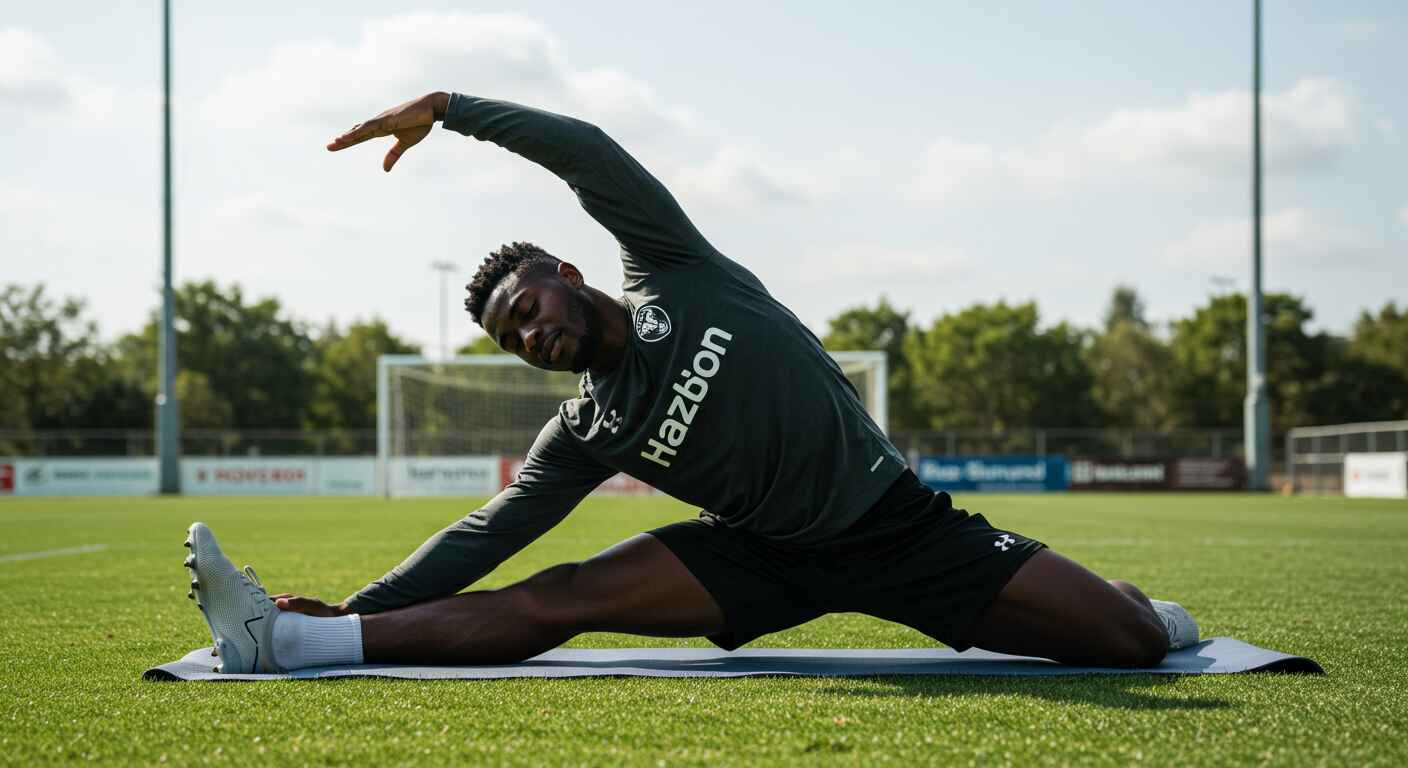Introduction:
Football is a physically demanding sport that requires players to be at the peak of their performance throughout the game. From intense sprints to sudden direction changes and tackling, players’ bodies undergo significant stress. To maintain high performance and avoid injuries, recovery plays a crucial role in an athlete’s routine. Yoga is one of the most effective recovery techniques, offering numerous benefits for football players. This blog explores how yoga and other recovery practices can enhance flexibility, reduce muscle soreness, and improve overall performance.
The Importance of Recovery in Football
Football is a high-impact sport that demands both physical and mental stamina. After a tough training session or match, proper recovery becomes crucial to avoid injuries and maintain peak performance. While rest is essential, recovery techniques such as yoga, stretching, and mobility exercises can help restore muscle balance, reduce soreness, and increase flexibility, making players more resilient in future games. Yoga, in particular, provides players with a holistic approach to recovery by incorporating breathwork, flexibility, strength, and relaxation.
Yoga for Football Players: Why It Works
Yoga offers several benefits that are specifically tailored for football players. Below are the key reasons why yoga is an ideal recovery technique for athletes in this sport:
-
Improved Flexibility: Football players rely on flexibility to increase their range of motion, especially when it comes to stretching, tackling, or sprinting. Yoga poses such as forward bends and hip openers target key muscle groups like the hamstrings, hip flexors, and lower back, which can become tight from intense training sessions.
-
Injury Prevention: Consistent yoga practice helps increase joint mobility, reducing the risk of injuries. It focuses on proper alignment, balance, and controlled movement, which are essential for preventing strains and sprains common in football players.
-
Enhanced Strength and Endurance: Many yoga poses, such as plank or downward dog, build core strength, which is vital for stability and balance in football. Stronger core muscles can enhance a player’s endurance and provide greater support during high-intensity movements like dribbling and jumping.
-
Mental Focus and Relaxation: Yoga is well known for its ability to reduce stress and promote mental clarity. For football players, relaxation techniques such as deep breathing and meditation can enhance focus on the field and provide mental clarity after the game. Yoga encourages mindfulness, which can help players stay composed in high-pressure situations.
Essential Yoga Poses for Football Players
Here are some of the best yoga poses that football players can incorporate into their recovery routine:
-
Downward Dog (Adho Mukha Svanasana): This pose stretches the hamstrings, calves, and spine, helping to relieve tightness in the lower body. It also promotes shoulder mobility, which is essential for upper body balance during play.
-
Child’s Pose (Balasana): A resting pose that helps to release tension in the back, hips, and thighs. It’s excellent for gently stretching the muscles after a high-intensity game or training session.
-
Lunge Pose (Anjaneyasana): This is ideal for stretching the hip flexors and quads, which often tighten after sprinting or kicking. It also helps improve stability and mobility in the legs.
-
Pigeon Pose (Eka Pada Rajakapotasana): Great for opening up the hips and targeting the glutes, piriformis, and lower back, which are areas that can get tight after playing football.
-
Bridge Pose (Setu Bandhasana): This pose strengthens the glutes and lower back while stretching the hip flexors and chest. It’s excellent for improving posture and overall core stability.
-
Seated Forward Fold (Paschimottanasana): A deep stretch for the hamstrings and lower back. It can help relieve muscle stiffness after long periods of running or intense activity.
Other Recovery Techniques for Football Players
While yoga is an excellent tool for recovery, there are other essential techniques that football players should incorporate into their routine:
-
Foam Rolling: Foam rolling is a form of self-myofascial release that helps alleviate muscle tightness and improve flexibility. It’s particularly useful for the quads, hamstrings, and IT band, which are often tight after a football match.
-
Active Recovery: Light activities such as walking, swimming, or cycling on recovery days can increase blood circulation to the muscles, helping to flush out toxins and promote healing.
-
Stretching and Mobility Exercises: Incorporating dynamic stretches before a match and static stretches afterward is vital for muscle recovery. Mobility exercises can also improve joint health and help players maintain optimal movement patterns.
-
Hydration and Nutrition: Proper hydration and post-game nutrition are essential for recovery. Replenishing fluids and consuming protein and carbohydrates after a match helps to repair muscles and restore energy levels.
-
Cold Therapy: Many athletes use ice baths or cold compresses to reduce inflammation and muscle soreness after intense physical activity. Cold therapy helps constrict blood vessels, reducing swelling and promoting faster recovery.
Conclusion:
Yoga and Recovery for Peak Football Performance
Yoga is a powerful tool that can help football players enhance flexibility, prevent injuries, and promote faster recovery. By incorporating yoga poses and other recovery techniques into their routine, athletes can ensure that their bodies are ready for their next big game. Whether you’re a professional footballer or an aspiring player, the benefits of yoga are undeniable when it comes to maintaining performance and avoiding injuries. With consistent practice, you’ll experience improved strength, flexibility, and mental focus, helping you perform your best on the field.
Learn more about the benefits of yoga for athletes at Yoga Journal.
Check out other football recovery tips on GHC Sportswear Blog.

